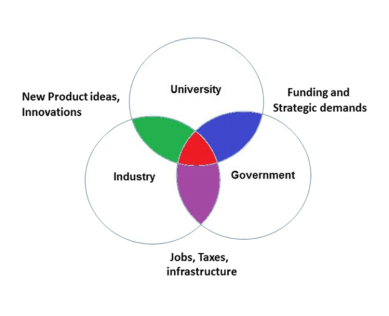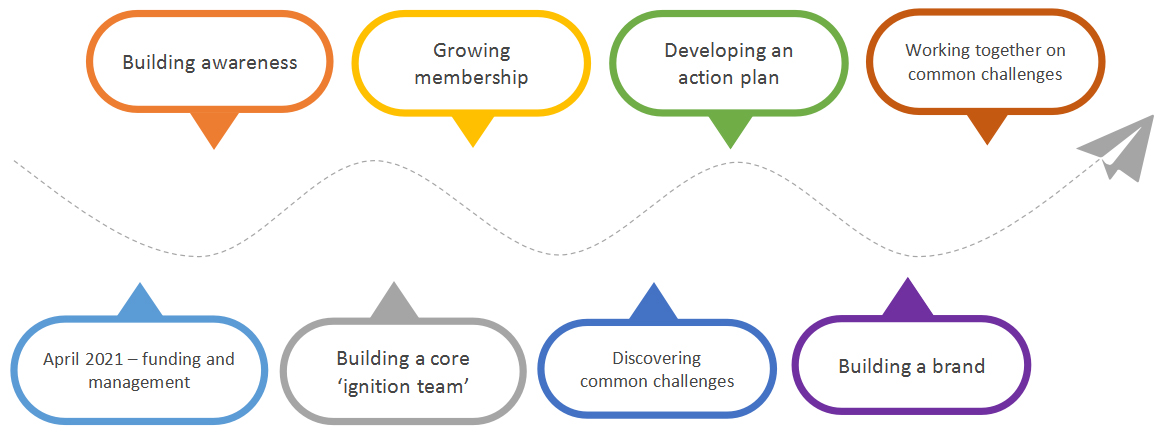About BORMAC
The Border Region Manufacturing Cluster (BORMAC) is an industry led cluster comprising of manufacturing companies spanning both the North and South of the border region in Ireland.
What is a Cluster?
The concept of industry clusters has been around since the 1980’s, coined from Michael Porters research into economic competitiveness. There are many definitions that coalesce around similar sentiments of clusters being “Regional agglomerations of companies, research institutions, government agencies, and others in a specific area of business activity related through various knowledge and economic linkages”(Porter, 2008, and Ketels, 2011). The concept of Industry clustering has proven to be economically beneficial for companies and regions, showing companies within clusters having higher growth, productivity and innovation than companies that are not in clusters.
The term ‘Cluster’ is sometimes used interchangeably with industry groups, networks and associations, however a key difference is that clusters include academic/research institutions and government agencies, aswell as companies, in their membership and this ‘triple helix’ supports a deeper level of engagement and collaboration.

Why a Border Region Manufacturing Cluster?
Manufacturing is one of the border region’s largest employment sector (Incl NI). In the NW alone it employs 13.7% of the region’s workers and accounts for 6.1% of regional enterprises, compared with 11.4% and 5.6% nationally.In NI, Manufacturing is the 3rd largest employer and the 2nd largest sector in terms of economic output. It accounts for a larger proportion of the economy in Northern Ireland than in the UK as a whole.
Digital transformation will affect future developments in the region’s Industry sector and there is a growing demand for automation, science, engineering and digital skills which are vital to sustaining and growing the region’s manufacturing sector and economy.This concentration of manufacturing in the border region, has highlighted the need to develop understanding of digitalisation and Industry 4.0, particularly in SME organisations, as less than one third of companies have a digitalisation strategy. Additionally with Brexit, the difficulties of disrupted supply chains, cross border workforce mobility and increasing customs/tariff complexities have become a reality, solutions to which, require different thinking.
Given this landscape within the border region there is an opportunity for BORMAC to help member companies to collaborate on strategic approaches to these challenges, both North and South of the border.
BORMAC is funded through Enterprise Ireland’s Regional Technology Clustering Fund (RTCF), is supported by the Government of Ireland and is hosted by ATU Sligo, soon to be part of the Atlantic Technological University. It is part of a growing network of industry-led clusters funded under the same initiative
BORMAC journey

Since April 2021 we have been on our development journey, building awareness of what we do through our ‘Steering team’, talking to companies to uncover pain points and common challenges, and developing our action plans around these common issues. We’ve developed 4 workstream focus areas which our action plans and projects are centred around.
BORMAC Steering Committee
In the first few months of BORMAC development we put together a cluster ignition team – as the name suggests, this team was formed to ignite the flame for our cluster. Comprised of members from academic institutions, government agencies and companies North and South of the Border, this team engaged with companies to spread the word about what BORMAC was and how clustering can help them. Over the course of the year we realised the need for a more formalised Industry led Steering Committee to develop and drive our longer term vision and sustainable model for BORMAC, and so we have morphed from the Ignition Team to the Steering Committee
Steering Committee members are:
Cluster Manager:
Shane Kelly, ATU Sligo
Industry Representatives:
Dominic Finlay, Kaon Automation
Darragh McMorrow, SL Controls
Kieran Rooney, Masonite
Andrew Hodson, Verus Metrology Partners
Mark McDowell, Zeus
Academic Representatives:
Dr. Xavier Velay, ATU Sligo
Finola Howe, ATU Sligo
Agency Body:
Enterprise Ireland
